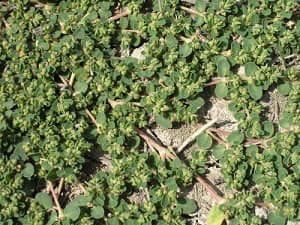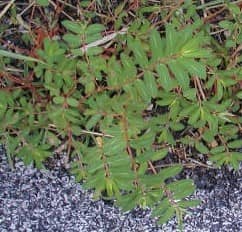Spurge is one of the most common problems for lawn owners, and they hardly want to know how to kill spurge weed. It grows slowly in height but spreads quickly on the ground. They are very harmful to your desired plants. So, it would help if you killed these weeds once you could identify them in your lawn to get a healthy lawn.
How and when does spurge grow?
Warm weather is suitable for growing spurge. You will notice them spreading around your lawn at high temperatures. Depending on your living place and weather, you could see the spurge growing from February to late August. Seeds start their germination once the temperature heats up and grows when the temperature hits 50-60 degrees in early spring.
Light is also essential for germination. The seeds won’t germinate if they are buried thicker than 0.5 inches. Plants that germinate during spring in relatively cool weather can remain small until the temperature rise. Once the temperature rises, the seeds sprout, and a rosette of leaves grows. The leaves of spurge can grow up to 3 feet and make a dense cover. Their reproductive growth is speedy, and the spurge plant can produce seeds within a month after germination.
How to identify spurge?
It is very easy to identify if any spurge grows in your lawn because they have specific leaves and stems. This weed may grow in different conditions depending on its type. However, most of the time, this weed grows in warmer places like a foxtail that prefers plenty of sunlight.
Types of spurge in your yard
There are many kinds of spurge available. However, most of them have these common features:
- Spurge has a central main root called the taproot.
- The stems of a weed extended from its taproot.
- The leaves of the spurge are arranged along its stem.
- They may have their own root system at the time of growing stems and leaves.
- Spurge grows slowly but spread rapidly.
- If you break the leaves of the spurge, you can see a milky sap start showing up.
There are many different types of spurge. The most common species of spurge weed are: –
Prostrate/spotted spurge

The prostrate spurge is also known as the spotted spurge. It is the most common variety of spurge. It may be toxic to your pets if they eat a large amount.
How do I identify a prostrate spurge?
The prostrate spurge leaves have a spot of maroon or a line in the middle of their leaf vein. Usually, the spurge stem grows outward, but it can also grow upward when searching for sunlight. The color of the stems is purple or pink, and it is the easiest way to distinguish the prostrate spurge from its other varieties.
Creeping spurge

Creeping spurge is also another common species of spurge weed. Its stem can reach up to 20 inches long. The leaves of the creeping spurge are egg-shaped, which is easily noticeable. You may find flowers at the tips of its stems, and usually, it becomes white-colored.
The leaves of the creeping spurge don’t contain spots that will help you distinguish it from the prostrate spurge weed. Its leaves’ color is light green, pale red, almost white, and sometimes slightly hairy.
Nodding spurge

The nodding spurge has reddish or pink stems with leaves. Its leaves can grow up to 2 inches. The color of its leaves is green. These leaves are oblong but can contain light red spots in their middle. Dry conditions, poor soil, and full sunlight are suitable for growing nodding spurge, and this type of spurge is found in gravel, sand, or clay soil. Sometimes, it can be reddish-green.
Petty spurge
Petty spurge prefers to grow in moist and shady places. Most of the time, you will find it among shrubs in garden beds. Petty spurge is light green colored and has slender stems.
How to kill spurge weed naturally?
There are two ways to control spurge, i.e., natural control and chemical control. Natural control includes weddings, solarization, and mulch.
Weeding
You should monitor the infested areas of your lawn so that you can pull out new weeds before growing their deep root system and producing seeds. During pulling the weeds, keep attention because the plants may break at the stem, and the leaving root can be the cause of regrowth. Wear gloves while hand pulling the weeds because the sap of the weed can irritate your skin. Spurge weeds grow low to the ground, so mowing is not effective in controlling spurge.
Be sure before planting new plants, you use a sterilized mix or not. Avoid the spotted spurge outbreaks at the time of buying plants. Mulches can help you in this purpose by preventing the sun and light from reaching the roots.
Solarization
Before planting turf and plants on your lawn, it’s recommendable to follow the solarization method. During the summer, covering your lawn with plastic sheets for four to six weeks. It will help to reduce the number of seeds when the summer temperatures become so high. Solarization can control the weed of these areas where the temperature is not very high.
Mulching
It is the most common cultural technique for controlling spurge weeds. This process of using organic or synthetic mulch prevents the sun or light from reaching the seed. The weeds cannot make food due to the lack of light and cannot grow without food. Bark, compost, or straw laid that are 2 inches thick can control the sprouting seeds, including spurge. Larger mulches are long-lasting. It would be more effective and get the expected result if you use a 3-4 inches layer of a large bark.
Chemical way to control spurge weed
Two types of Chemical control processes are available. One is pre-emergent herbicides, and another is post-emergent herbicides.
Pre-emergent herbicides for spurge weed
Pre-emergent herbicides can prevent spurge weed outbreaks; this type of herbicide only works on seeds. So, you have to apply it before the seed’s germination. The germination of seeds usually occurs before the temperatures exceed 60°F and at a 1-inch depth. Therefore, winter can be the appropriate season for the application.
There are many effective pre-emergent herbicides, such as pendimethalin, oryzalin, benefin, dithiopyr, trifluralin, and isoxaben. Only dithiopyr, oryzalin, pendimethalin, and trifluralin are allowed for home gardeners and lawn owners. Other combination substances such as benefin+ oryzalin are available for lawn care companies and landscape professionals.

Note: Don’t use the pre-emergent herbicides in home vegetable gardens because the chemicals stay in the soil for a few months after use.
Post-emergent herbicides for spurge weed
Post-emergent herbicides are safe for use for home gardeners and lawn owners. Many post-emergent herbicides are available in the market, such as 2,4-D, MCPP, glyphosate, dicamba mix, triclopyr, etc. But it is noticeable that the 2,4-D and its combination products cannot control more mature and large spurge plants.

How to Prevent Spurge Weed in Your Lawn
Spurge is one kind of spotted weed that grows at high temperatures, mainly in the summer heat. This invasive weed affected the weak areas of the lawn and grows in landscape beds, sidewalk cracks, and gardens.
Luckily, spurges are easily visible for their tiny green leaves, hairy red stems, and mat-like shape. During the summer, these plants produce small green flowers, which make them more noticeable.
Each prostrate or spotted spurge can produce thousands of seeds and spread them throughout the lawn’s weak areas. Some of them will germinate immediately, and some seeds remain dormant until the next spring. This invasive weed can produce seeds within 4-5 weeks after germination. Always remember, early identification, control, and treatment are very important to get rid of them.
At first, you have to remove all the small patches. It is necessary to properly detect the single taproot and flat-shaped spurge and then pull them by hand. This plant breaks off easily at the stem, so keep attention while removing them by hand and pulling them with their roots. It will come back if you do not get it all out.
It is essential to remove spurge before flowering and to produce seeds to prevent their come back. Suppose you have found larger and more mature spurge in your lawn. In that case, you have to apply those products that are specially created for broadcast applications. Finally, you have to choose the right product to eliminate unwanted spurge weeds and feed your cultivated plants simultaneously.
Final Thought
Spurge weeds are very invasive. If you don’t apply the right treatment, these weeds will come back every year. Like the other weed, they also can be the cause of harm to your lawn. So, inspect your lawn regularly and identify as soon as possible. Then kill them by applying the right process and make a picturesque lawn for getting pleasure.




i own a 35000 acre ranch in central mt. with leafy spurge it is a nightmare we use tordon mixed with chapparelcant they make a chemical that kills it dead with one application
Thanks for sharing your experience.
I have about 4 acres of centipede lawn, in which I recently noted that Prostrate Spurge has intertwined itself through most of it. I need a serious answer to get rid of this. I also have pet rabbits that eat some of the centipede. Your thoughts, Bob. Thanks, Bill
Are these a brand name or the ingredient that kills lawn spurge?
I live in South Dakota and we have below zero temps in the winter. And a lot of snow should I wait tell spring to spray? Does it die in the winter?